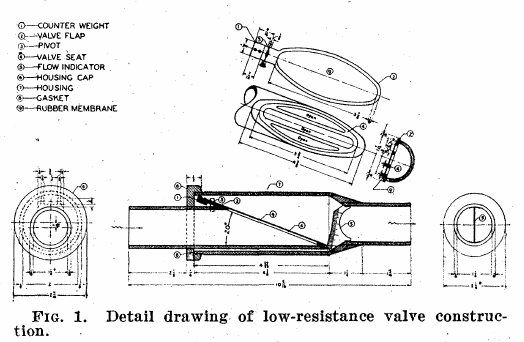From: A low resistance valve and indicating flowmeter for respiratory measurements. By Leslie Silverman and Robert C. Lee. Science 1946; 103: p537.
“It can be noted that the valve flap angle is very low (20 degrees), and thus very little change in direction is necessary in permitting air to pass, once the valve begins to open. The area of the valve flap surface is large, and hence a low pressure will exert enough force to open it. The weight of the valve flap is offset by the counterweight. This counterweight (4 grams) was proportioned to give a low opening pressure and yet allow an adequate amount of of positional movement in the complete valve. The seating surface of the valve is limited to the small longitudinal braces and edges of the seat periphery. In order to reduce the adhesive effect of the rubber membrane when wet, the seating surfaces are dusted with talcum powder. This powder prevents the rubber membrane and Lucite seating surfaces from wetting and also helps preserve the membrane.”
